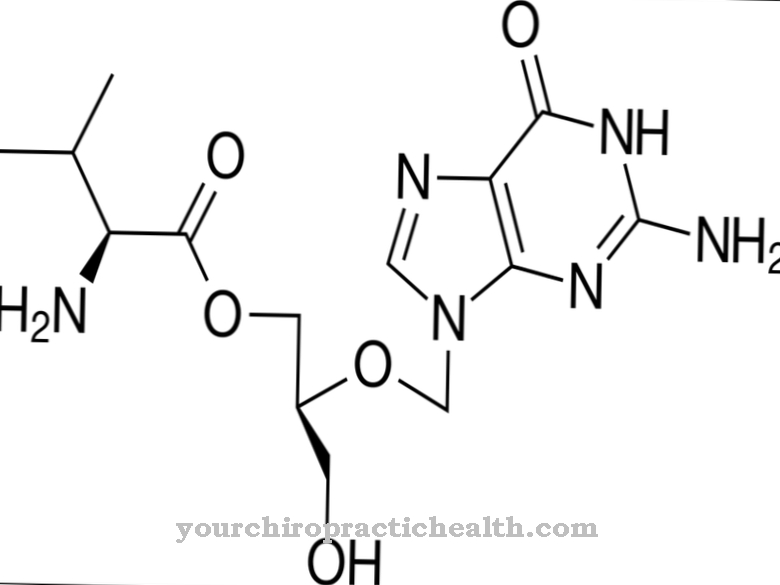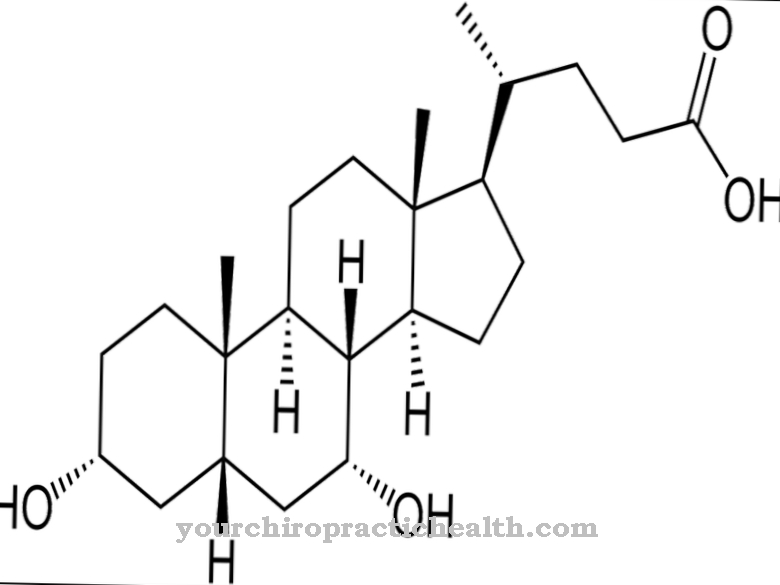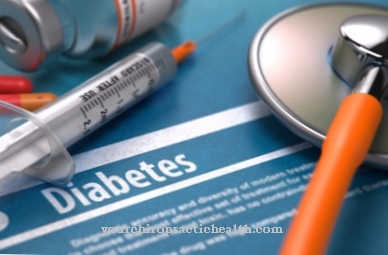As Ethambutol is called a special antibiotic. It is used to treat tuberculosis.
What is ethambutol?
Ethambutol is a specialized antibiotic that belongs to the group of tuberculostatics. It is considered a classic drug for the treatment of tuberculosis. It is also suitable for treating other infections caused by mycobacteria. It is only used in combination with other preparations against mycobacteria.
Ethambutol has been used in Europe since the 1960s. In Germany, the active ingredient is sold as a single preparation under the names Myambutol® and EMB-Fatol®.
Pharmacological effect
Ethambutol belongs to the group of tuberculostatics. The drug can have both a growth-inhibiting and a bacteria-killing effect, depending on its concentration. Ethambutol acts against mycobacteria that are outside the body cells, but also against specimens that are hidden in the phagocytes. However, for this purpose, a concentration of ethambutol that is seven times higher than normal must be administered.
One of the advantages of ethambutol is the low resistance of mycobacteria to the antibiotic. Only about two percent of the Mycobacterium tuberculosis bacterial genus are insensitive to the tuberculostatic agent. For this reason, the drug is usually classified as the drug of first choice. In addition, ethambutol can develop its effects if there are intolerances to other tuberculosis drugs.
Ethambutol has the property that it is quickly absorbed by the mycobacteria. It prevents the normal structure of the cell walls. The antibiotic disrupts the production of mycolic acid, an important cell building block from lipids. This in turn has a negative effect on the cell wall structure of the pathogens in rapid growth phases. The same applies to mycobacteria in the resting state, so that the mechanism of action of the drug is independent of the respective phase of bacterial growth. However, it takes about 24 hours for growth to be markedly inhibited.
Other anti-tuberculosis drugs such as rifampicin or isoniazid are also supported in their effect by ethambutol. After ingestion, the antibiotic reaches the gastrointestinal tract quickly and almost completely. The active ingredient reaches its maximum concentration in the blood around two to four hours after ingestion. Almost unchanged, ethambutol is excreted from the body via the kidneys. A small portion gets out of the organism through the bile.
Since ethambutol is accumulated in the lungs by erythrocytes (red blood cells) as well as by macrophages and alveolar cells, its concentration in these cells is higher than in blood serum.
Medical application & use
Ethambutol's main area of application is the treatment of tuberculosis caused by the mycobacteria family. Mycobacterium tuberculosis is one of the most common species. Mycobacterium africani, Mycobacterium microti and Mycobacterium bovis are less common.
The antibiotic acts against the pathogen in all stages of the disease, even if other tissues outside the lungs are affected. However, a combination with other agents that work against tuberculosis is important. The drug is also often given if the tuberculosis breaks out again. In the case of proven bacterial resistance, ethambutol serves as a reserve agent.
The antibiotic is administered in the form of film-coated tablets. The patient takes the preparation once a day, regardless of meals. It is recommended that the tablets be taken on an empty stomach.
You can find your medication here
➔ Medicines against coughs and coldsRisks & side effects
The use of ethambutol can cause undesirable side effects in some people. This primarily includes inflammation of the optic nerve, which depends on the dose level and the duration of therapy. At first, the patient's color vision is disturbed. In the further course there is a risk of loss of the visual field and, in the worst case, visual disturbances up to blindness. For this reason, when ethambutol is administered, an ophthalmologist must be closely monitored.
Other common side effects include increased uric acid levels, dizziness, headache, numbness in the limbs, trembling fingers, orientation problems, confusion and hallucinations. Furthermore, allergic reactions such as fever, rash or itching, damage to the kidneys, changes in the blood count or liver dysfunction can occur.
Feeling of fullness, gas, abdominal pain, nausea and allergic shock are less common. In the event of shock, ethambutol therapy should be discontinued immediately. It is also important to alert an emergency doctor. In the case of color vision disorders, the patient must consult an ophthalmologist.
A contraindication for taking ethambutol is hypersensitivity to the drug. The same applies to the presence of eye impairments that prevent precise visual control. If there is inflammation of the optic nerve, gout or disorders of kidney functions, the doctor must carefully weigh up the risks and benefits of ethambutol therapy.
There are no known harmful effects of ethambutol in pregnancy, although the antibiotic can penetrate the placenta. In addition, the agent passes into breast milk, the concentration being similar to that in the mother's blood. In principle, ethambutol may only be administered during pregnancy and breastfeeding after a detailed examination by the doctor.
Treatment with ethambutol in children can only be carried out from the age of 6. From this age on, eye tests are possible, with which a possible deterioration in vision can be controlled.
Interactions are possible when taking ethambutol and other drugs at the same time. Aluminum hydroxide and similar acid inhibitors can reduce the effectiveness of the antibiotic. This risk also exists with the administration of magnesium and the auxiliary substance [[spermine].
























.jpg)



